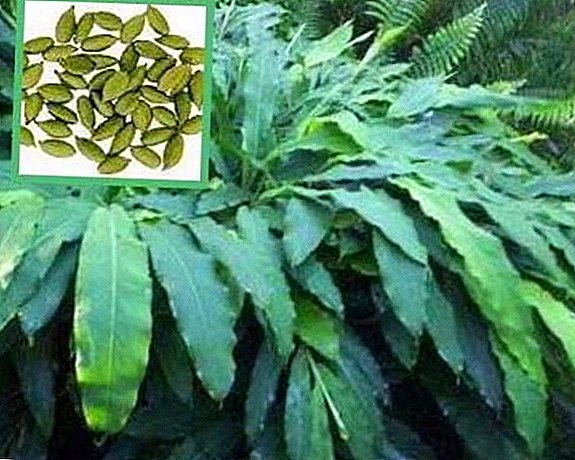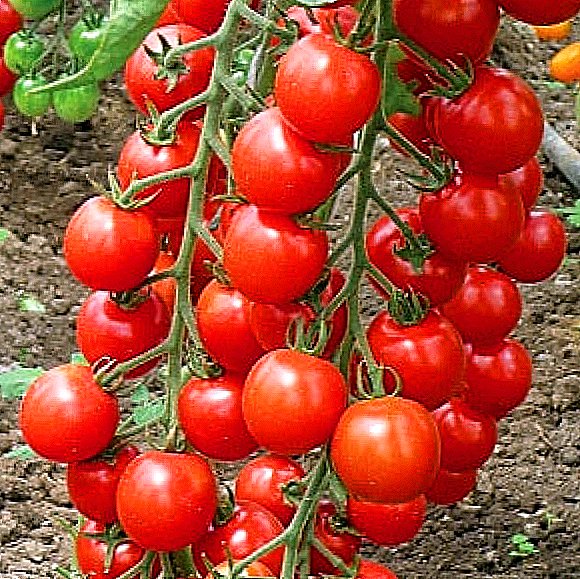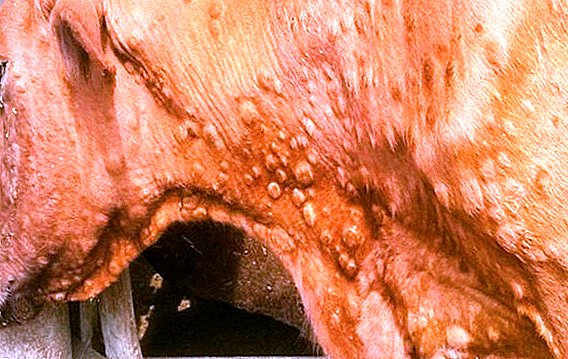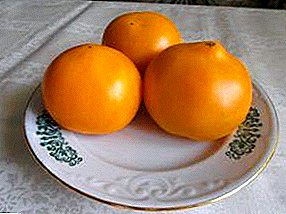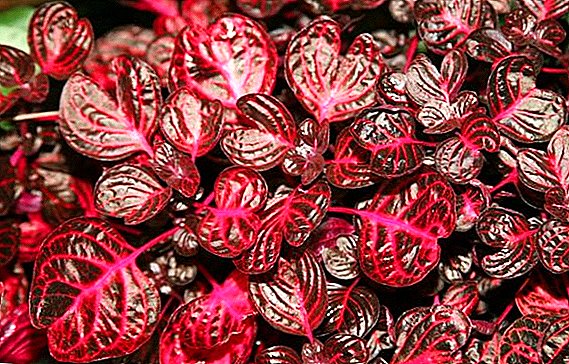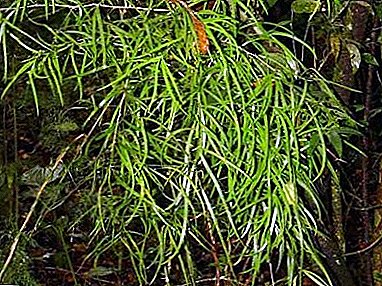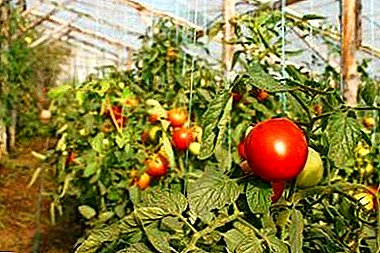
One of the most useful and tasty vegetables, of course, is a tomato. Each summer resident dreams of growing a large, fleshy, tasty and juicy fruit. When growing tomatoes in greenhouse conditions, the crop is abundant and of high quality.
Of course, in order to get an excellent result in growing, it will be necessary to strictly follow the rules of agricultural technology.
Next, tell about the secrets of growing tomatoes and the features of their care in polycarbonate greenhouses.
The advantages of polycarbonate material
Polycarbonate greenhouses are popular with gardeners.After all, they have a lot of advantages compared to ordinary ones. The differences between them can be traced as follows.
- Polycarbonate allows you to build a greenhouse of any shape, as it is quite flexible and elastic, which can not be said of other materials. It is convenient to work with it, because it is easily cut and bent without being damaged.
- This material does not crack and does not freeze through with a sharp temperature drop, unlike, for example, from glass and film.
- Polycarbonate greenhouses are reliable and durable - they can last up to 20 years. If the frame of the greenhouse is covered with a film, then its service life without damage is a maximum of 2 years.
Is it possible to grow tomatoes like that?
One of the best options for growing tomatoes is just a greenhouse made of cellular polycarbonate. She has many advantages:
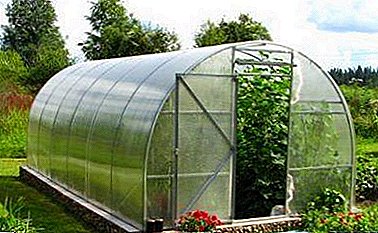 The sun's rays do not overheat such a greenhouse, because all surfaces of the structure are transparent to the best of measure. Due to this, the plants do not get burns and the ultraviolet rays of the harmful spectrum are not transmitted.
The sun's rays do not overheat such a greenhouse, because all surfaces of the structure are transparent to the best of measure. Due to this, the plants do not get burns and the ultraviolet rays of the harmful spectrum are not transmitted.- Cellular material maintains a favorable temperature regime for tomatoes, reliably protects against spring frosts and various weather cataclysms.
- Attractive appearance.
The disadvantages include such moments:
- In due course color polycarbonate on the sun burns out, and transparent becomes muddy.
- With changes in temperature, the material narrows and expands, if you do not take into account this factor when cutting and do not make a reserve for expansion, then in places of fastenings and folds the greenhouse can crack in winter.
- Scratch polycarbonate is unstable.
Important. Difficulties in the cultivation of tomatoes in such a greenhouse can occur only when the temperature violation and at high humidity. This must be closely followed.
The following can be distinguished Features that must be considered when growing to get a good harvest of tomatoes:
- It is best to acquire self-pollinating varieties of tomatoes.
- Be sure to air the room.
- Do not allow condensation to form in the greenhouse.
Which varieties to choose?
When choosing a variety of tomatoes for a carbonate greenhouse you need to pay attention to such qualities:
- Self-pollination.
- The ability to grow in one stem.
- Disease resistance.
- Ability to easily carry excessive moisture.
You can choose to grow as stunted and tall tomatoes, early and medium ripening. The most popular are the following varieties.
Mikado pink
Large pink fruit (up to 600 g) for universal use, the plant reaches 2 meters, has excellent immunity. With one bush can collect more than 5 kg of fruit.

Pink raisins
Fruits of excellent taste, medium-sized. Fruiting is long and abundant.

King of Kings
This giant fruit reaches 1 kg, tasty and juicy. Resistance to rot and late blight, reaches a height of 1.8 m.

F1 junior
Ultra early hybrid variety, fruits of bright red color oval, weighing about 100 g. The bush grows up to 50 - 60 cm in height.

You can learn more about tomato varieties for the greenhouse from the video:
Where to begin?
Already in autumn it is necessary to start preparing the greenhouse for the future harvest. It is possible to distribute all the work into stages:
- After the end of the season, order is established: the entire tops and the remnants of tomatoes are carefully removed.
- All surfaces are washed with water (preferably with soap).
- Treatment is carried out with a disinfectant solution.
Important! Part of the work can be done in the spring, before you grow tomatoes, but you must rinse the greenhouse in the fall.
Preparatory measures
Soil preparation
- In the fall, the soil is spilled with a solution of copper sulfate, fertilizers are applied and everything is dug over.
- In the spring about 2 weeks before planting, the soil should be treated with a solution of copper sulfate, add wood ash and potassium salt.
- Soil slightly loosen and form ridges, leaving a passage of at least 60 cm.
- After about a week, the soil needs to be treated with one of the biological preparations: “Baikal-M”, “Fitosporin” or “Trichodermin”.
Sowing seeds
Procedure:
- Approximately 2 weeks before sowing the seeds of tomatoes, you need to disinfect the seedling boxes and fill them with prepared soil, it is good to shed them.
- Before sowing, the seeds need to hold for 20 minutes in a solution of Fitosporin-M, and then in a growth stimulator (any).
- Spread the seeds into small grooves (about 1.5 cm deep), lightly sprinkle with soil and cover with a film on top. The air temperature is desirable to maintain not lower than 22 degrees.
- As soon as shoots begin to appear, the air temperature should be lowered slightly (to about 18 degrees).
- The film needs to be opened periodically and as soon as the bulk of the seeds come up, then remove it completely.
- In April, the hardening of seedlings begins, everything is done gradually. First, a window opens for a short time, gradually this time increases. Carry out boxes of seedlings on the balcony or veranda can be at an outdoor temperature of 12 degrees.
Picks
You need to dive in about a week (or one and a half) after germination. Transplantation into a more spacious container is carried out very carefully, always with a lump of earth.
Watering and feeding
 Watering should be very careful - strictly under the root and warm water. Watering should be about once every 5 - 7 days.
Watering should be very careful - strictly under the root and warm water. Watering should be about once every 5 - 7 days.
Feed the seedlings can be about a week after picking. Complex fertilizer Agricol is very popular, it needs to be applied after watering.
For feeding it is also very good to use the “Athlete” tool (it will not allow the plants to stretch out and strengthen the root system well), or “Health”, “Fortified”, etc.
How to transplant in a greenhouse?
They start transplanting to the greenhouse at the beginning of May, while the temperature of the soil (inside) should be about 15 degrees. Different varieties have their own nuances of planting:
- Undersized (with one stem) Plants are planted at a distance of 25 cm from each other, between the rows - 45 cm.
- Undersized (strongly branched) bushes are best planted in a staggered manner (40 to 40 cm).
- Tall Ideally, tomatoes should also be planted in a staggered manner, but the distance between rows should be at least 75 cm, and between bushes - at least 60 cm.
The transplantation process itself takes place in this way: each plant is taken out together with a clod of earth and moves into the hole (previously spilled with water).
Attention! It is impossible to deeply deepen bushes, the exception is possible only for overgrown plants.
The main stages of cultivation from A to Z
The main stages can be distinguished as follows:
- Sowing seeds.
- Growing seedlings.
- Transplant seedlings in the greenhouse.
- Tying and staining tomatoes in a greenhouse.
- Pollination tomato.
- Watering and feeding.
- Harvesting and storage.
The necessary conditions
Humidity
The greenhouse must be periodically ventilated from time to time so that there is no stagnation of moisture, this can destroy the tomatoes. Maintain humidity should be at the level of 65 - 75%.
Temperature
 Inside the greenhouse, the temperature should be maintained within 20-22 degrees and slightly higher (by 3-5 degrees) during the flowering period of tomatoes.
Inside the greenhouse, the temperature should be maintained within 20-22 degrees and slightly higher (by 3-5 degrees) during the flowering period of tomatoes.
You can adjust the optimum temperature as needed:
- through ventilation;
- heated soil (using covering material);
- heated air - you can install the frame over the plants and stretch the film, thereby increasing the temperature.
Masking
Pysynki need to be removed, because because of them the plant only in vain consumes power. These side shoots from leafy sinuses can grow very strongly, shade the entire shrub and slow the ripening of tomatoes. It is best to pickle up in the morning, the length of the branch should be about 8 cm. You can remove it with scissors, or you can simply pinch off with your hand.
Lighting
Polycarbonate greenhouses have a very high dignity - they have a high transparency. But in early spring, still such coverage is not enough, For tomatoes, the light day should last 12-15 hours. Therefore, it is best to install additional lighting in the design, while choosing lamps with a neutral glow.
Secrets of a good harvest
The process of growing tomatoes in such conditions has its own subtleties and nuances.
Secrets of obtaining the desired result:
- To choose the right place for the location of the structure, it should not be shaded by buildings and trees.
- It is necessary to regularly wipe the walls of the greenhouse from condensate.
- Choose the perfect seed.
- It is imperative to treat and disinfect the soil and all surfaces of the structure.
- Maintain a comfortable microclimate.
As a result, we can conclude that the cultivation of tomatoes in polycarbonate greenhouses is, of course, a rather troublesome process. But having received the first harvest of their own early tasty tomatoes, it is already impossible to abandon this process. For this, it is worthwhile to select the seeds correctly, tinker with the seedlings and then carry out the full range of necessary agrotechnical measures.


 The sun's rays do not overheat such a greenhouse, because all surfaces of the structure are transparent to the best of measure. Due to this, the plants do not get burns and the ultraviolet rays of the harmful spectrum are not transmitted.
The sun's rays do not overheat such a greenhouse, because all surfaces of the structure are transparent to the best of measure. Due to this, the plants do not get burns and the ultraviolet rays of the harmful spectrum are not transmitted.